Deltoid Rehab Program
Anterior Deltoid Exercises
for Patients with Massive Rotator Cuff Tears
Lennard Funk, Roberta Ainsworth, Robert Conlon, Sarah Russell
As a result of prolonged overuse and wear and tear, the muscles arising from the shoulder blade and attaching to the top of your humerus (arm bone) – the rotator cuff muscles – have become completely torn (massive rotator cuff tear). This means you are no longer able to easily lift your arm.
However there is another powerful muscle on the outside of your arm – the deltoid muscle – that may be re-educated to compensate for the torn rotator cuff.
The following exercises should be done three to five times a day to strengthen your deltoid muscle. It will reduce your pain and improve both the range of movement and your arm function.
These exercises must be done for at least 12 weeks and must always be performed starting lying down to begin with. You will must do the exercises under the supervision of a qualified physiotherapist.
Exercises:
Supine active assisted:
- Lie down flat on your back, with a pillow supporting your head.
- Bend your elbow as far as possible. Then raise your arm to 90 degrees vertical, using the stronger arm to assist if necessary. Once you have got to 90 degrees, you can straighten your elbow.
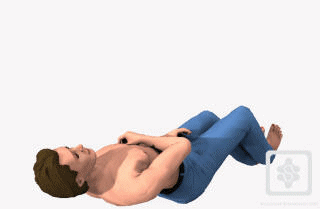
- Hold your arm in this upright position with its own strength.
- Circles: Slowly with your fingers, wrist and elbow straight move the arm in small circular movements clockwise and counterclockwise. Gradually increase the circle as comfortable (this may take a few weeks to increase to bigger and bigger circles).
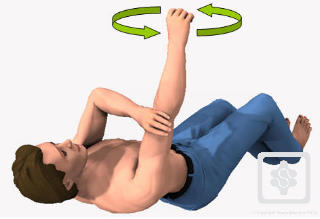
- Secondly move the arm forwards and backwards in line with the outside leg (gentle movement from both sides of the arm upright position.)
- Keep the movements smooth and continuous for 5 minutes or until fatigue.
- As you get more confidence in controlling your shoulder movement, gradually increase the range of movement until your arm will move from the side of your thigh to above your head, touching the bed, and return.
.gif)
Progress to light weight:
- As you get more confidence in controlling your shoulder movement, a lightweight e.g. a tin of beans or small paperweight, should be held in the affected hand.
- Repeat as above (5 and 6).
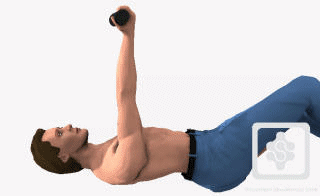
Progress to sitting and standing:
- Having more confidence in controlling your shoulder movement gradually go from lying down to sitting and eventually standing.
- At this stage you may recline the head of your bed or put some pillows underneath your back to recline your position.
- Repeat the same exercise again, this time against some gravity.
- Start again from holding your arm in the upright position with its own strength.
- Repeat as above (5, 6 and 7).
- Start first without any weights and progress to use the same lightweight you used before in the lying down position.
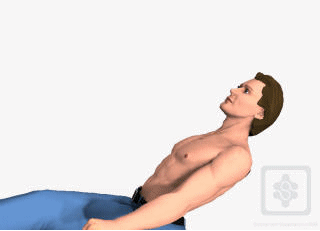
Resisted exercise:
- For re-education of concentric contracture of the deltoid muscle.
- Make a fist with the hand of the affected side. The flat hand of the opposite side is providing resistance. Push your affected side hand against resistance from the other hand. Whilst doing this, you will notice that you can fully elevate your arm (above your head).
- Repeat these exercises in order to ‘learn’ and re-educate your Deltoid muscle to perform this ‘concentric contracture’ even without pushing against your other arm.
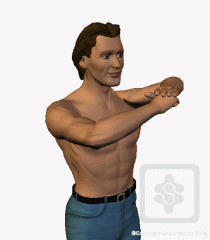
NOTES:
- You should repeat these exercises X 10 in a session, 3 to 5 sessions per day.
- Stop exercising if your pain increases or you feel unwell.
- You should expect to see some improvement by 6 and 12 weeks.
Adapted from the Wrightington Upper Limb Unit ![]()
& the Torbay Cuff Rehabilitation Programme
Also see: Research Evidence


